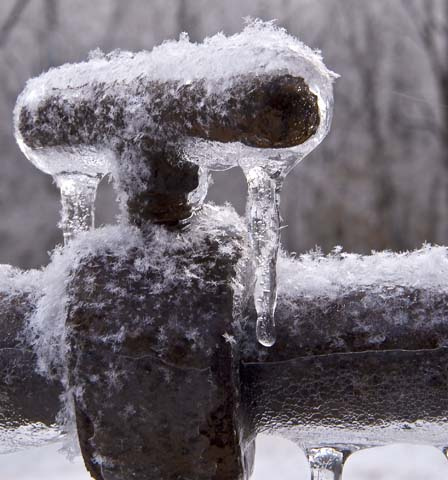Tips to Protect Pipes from Freezing: Expert Tips
Tips to Protect Pipes from Freezing: Expert Tips
Blog Article
Right here below you can get a good deal of very good data about Preventing and dealing with frozen pipes.

Winter can ruin your pipes, specifically by freezing pipelines. Below's just how to avoid it from occurring and what to do if it does.
Intro
As temperature levels drop, the danger of icy pipelines increases, potentially causing pricey repairs and water damage. Comprehending exactly how to avoid icy pipelines is crucial for homeowners in cold climates.
Understanding Icy Pipelines
What triggers pipes to freeze?
Pipelines ice up when revealed to temperatures below 32 ° F (0 ° C) for prolonged durations. As water inside the pipelines ices up, it increases, taxing the pipe walls and potentially causing them to break.
Dangers and problems
Frozen pipes can bring about supply of water disturbances, home damages, and pricey repairs. Burst pipes can flood homes and cause comprehensive structural damage.
Signs of Frozen Pipeline
Determining frozen pipes early can stop them from breaking.
Just how to recognize frozen pipes
Look for decreased water circulation from taps, unusual odors or sounds from pipelines, and visible frost on revealed pipelines.
Prevention Tips
Shielding at risk pipes
Cover pipes in insulation sleeves or utilize warm tape to shield them from freezing temperature levels. Focus on pipes in unheated or exterior areas of the home.
Heating techniques
Keep interior spaces sufficiently heated up, particularly areas with plumbing. Open closet doors to permit cozy air to distribute around pipes under sinks.
Shielding Outdoor Plumbing
Yard hoses and exterior taps
Separate and drain garden pipes prior to winter months. Set up frost-proof spigots or cover exterior taps with protected caps.
What to Do If Your Pipelines Freeze
Immediate actions to take
If you believe frozen pipes, keep taps open up to alleviate pressure as the ice melts. Utilize a hairdryer or towels soaked in hot water to thaw pipelines gradually.
Long-Term Solutions
Architectural modifications
Think about rerouting pipes far from outside walls or unheated areas. Include additional insulation to attics, cellars, and crawl spaces.
Upgrading insulation
Invest in high-quality insulation for pipelines, attics, and wall surfaces. Appropriate insulation helps preserve consistent temperature levels and decreases the threat of frozen pipelines.
Final thought
Preventing frozen pipelines requires positive measures and quick feedbacks. By understanding the reasons, indicators, and preventive measures, house owners can protect their plumbing during winter.
6 Proven Ways to Prevent Frozen Pipes and Protect Your Home
Disconnect and Drain Garden Hoses
Before winter arrives, start by disconnecting your garden hoses and draining any remaining water. Close the shut-off valves that supply outdoor hose bibs and leave the outdoor faucet open to allow any residual water to drain. For extra protection, consider using faucet covers throughout the colder months. It’s also important to drain water from any sprinkler supply lines following the manufacturer’s directions.
Insulate Exposed Pipes
Insulating your pipes is an effective way to prevent freezing. Pipe insulation is readily available at home improvement stores and is relatively inexpensive. Pay close attention to pipes in unheated areas such as the attic, basement, crawl spaces, or garage. Apply foam insulation generously to create a buffer against the cold. You can also wrap your pipes in heat tape or thermostat-controlled heat cables for added warmth.
Seal Air Leaks
Inspect your home for any cracks or openings that could let in cold air. Seal any holes around the piping in interior or exterior walls, as well as the sill plates where your home rests on its foundation. Additionally, make sure to keep your garage door closed unless you’re entering or exiting. Leaving it open creates a significant air leak that can lead to frozen pipes.
Allow Warm Air Circulation
During cold snaps, it’s essential to allow warm air to circulate evenly throughout your home. Leave interior doors ajar to promote better airflow. Open kitchen and bathroom cabinets to help distribute heat consistently around the rooms. If you have small children or pets, be sure to remove any household chemicals or potentially harmful cleaners from open cabinets for safety.
Let Faucets Drip
A small trickle of water can make a big difference in preventing ice formation inside your pipes. When temperatures drop significantly, start a drip of water from all faucets served by exposed pipes. This continuous flow helps prevent the water from freezing. Additionally, running a few faucets slightly can relieve pressure inside the pipes, reducing the chances of a rupture if the water inside does freeze.
https://choateshvac.com/6-proven-ways-to-prevent-frozen-pipes-and-protect-your-home/

As a devoted person who reads about Helpful Tips to Prevent Frozen Pipes this Winter, I thought sharing that information was a smart idea. Make sure you take the time to share this blog if you enjoyed it. We love your readership.
Visit Report this page